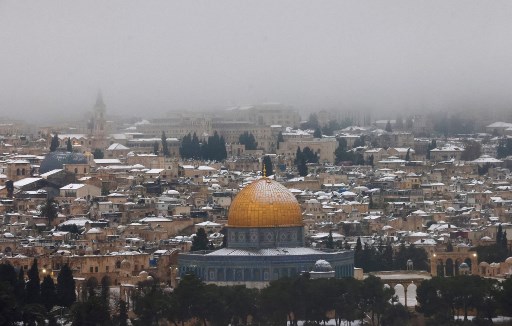
403
Sorry!!
Error! We're sorry, but the page you were looking for doesn't exist.
Occupation continues its strategy of targeting Palestinian cities
(MENAFN) More than a year into the ongoing war of extermination against the Gaza Strip, the occupation continues its strategy of targeting Palestinian cities, destroying residential blocks, and devastating the region's health infrastructure. One such attack was the destruction of Kamal Adwan Hospital, where the occupation forces besieged, evacuated, arrested, and abused patients, including the sick, injured, and bodies of martyrs. The hospital was ultimately burned down, rendering it inoperable and leaving the area without essential medical services.
This destruction is part of a broader policy aimed at evacuating and controlling the northern Gaza Strip, displacing its residents and demolishing its infrastructure. This ongoing campaign of violence and destruction has drawn condemnation from the international community, though the occupation's brutal actions persist. Due to relentless aerial bombardment, the health system in northern Gaza has been completely paralyzed, forcing many Palestinians, sick and injured, to travel on foot to Gaza City for medical treatment. Dr. Bashar Murad, director of the Al-Quds Hospital of the Red Crescent, reported that many patients from Kamal Adwan Hospital were transferred to the destroyed Indonesian Hospital, but it has become impossible to reach Al-Awda Hospital in Jabalya because of the bombings and the occupation's control over all access routes.
Additionally, over 300 families in Beit Hanoun remain stranded, with no information about their conditions, while reports suggest massacres committed by the occupation in the area. In the southern Gaza Strip, the occupation forces, notably the Nahal Brigade, withdrew from Rafah after suffering heavy casualties—at least 50 soldiers and officers were killed, and hundreds more were wounded by Palestinian resistance. Responsibility for the region was handed over to the Kiriati Brigade, an armored reserve brigade. The Nahal Brigade had been involved in the destruction of Rafah since May, taking control of the Philadelphia axis, a point of contention in ceasefire negotiations, with Hamas demanding the occupation's withdrawal. Despite international warnings about the dangers of a ground operation in Rafah due to the large number of displaced people, the occupation began its operation in the city on May 6. Over the course of the operation, Rafah saw its population increase from 300,000 to over 1.4 million displaced individuals. The occupation forces eventually took control of the Rafah land crossing, destroyed it, and burned it on June 17, further escalating the devastation in the region.
This destruction is part of a broader policy aimed at evacuating and controlling the northern Gaza Strip, displacing its residents and demolishing its infrastructure. This ongoing campaign of violence and destruction has drawn condemnation from the international community, though the occupation's brutal actions persist. Due to relentless aerial bombardment, the health system in northern Gaza has been completely paralyzed, forcing many Palestinians, sick and injured, to travel on foot to Gaza City for medical treatment. Dr. Bashar Murad, director of the Al-Quds Hospital of the Red Crescent, reported that many patients from Kamal Adwan Hospital were transferred to the destroyed Indonesian Hospital, but it has become impossible to reach Al-Awda Hospital in Jabalya because of the bombings and the occupation's control over all access routes.
Additionally, over 300 families in Beit Hanoun remain stranded, with no information about their conditions, while reports suggest massacres committed by the occupation in the area. In the southern Gaza Strip, the occupation forces, notably the Nahal Brigade, withdrew from Rafah after suffering heavy casualties—at least 50 soldiers and officers were killed, and hundreds more were wounded by Palestinian resistance. Responsibility for the region was handed over to the Kiriati Brigade, an armored reserve brigade. The Nahal Brigade had been involved in the destruction of Rafah since May, taking control of the Philadelphia axis, a point of contention in ceasefire negotiations, with Hamas demanding the occupation's withdrawal. Despite international warnings about the dangers of a ground operation in Rafah due to the large number of displaced people, the occupation began its operation in the city on May 6. Over the course of the operation, Rafah saw its population increase from 300,000 to over 1.4 million displaced individuals. The occupation forces eventually took control of the Rafah land crossing, destroyed it, and burned it on June 17, further escalating the devastation in the region.

Legal Disclaimer:
MENAFN provides the
information “as is” without warranty of any kind. We do not accept
any responsibility or liability for the accuracy, content, images,
videos, licenses, completeness, legality, or reliability of the information
contained in this article. If you have any complaints or copyright
issues related to this article, kindly contact the provider above.


















Comments
No comment